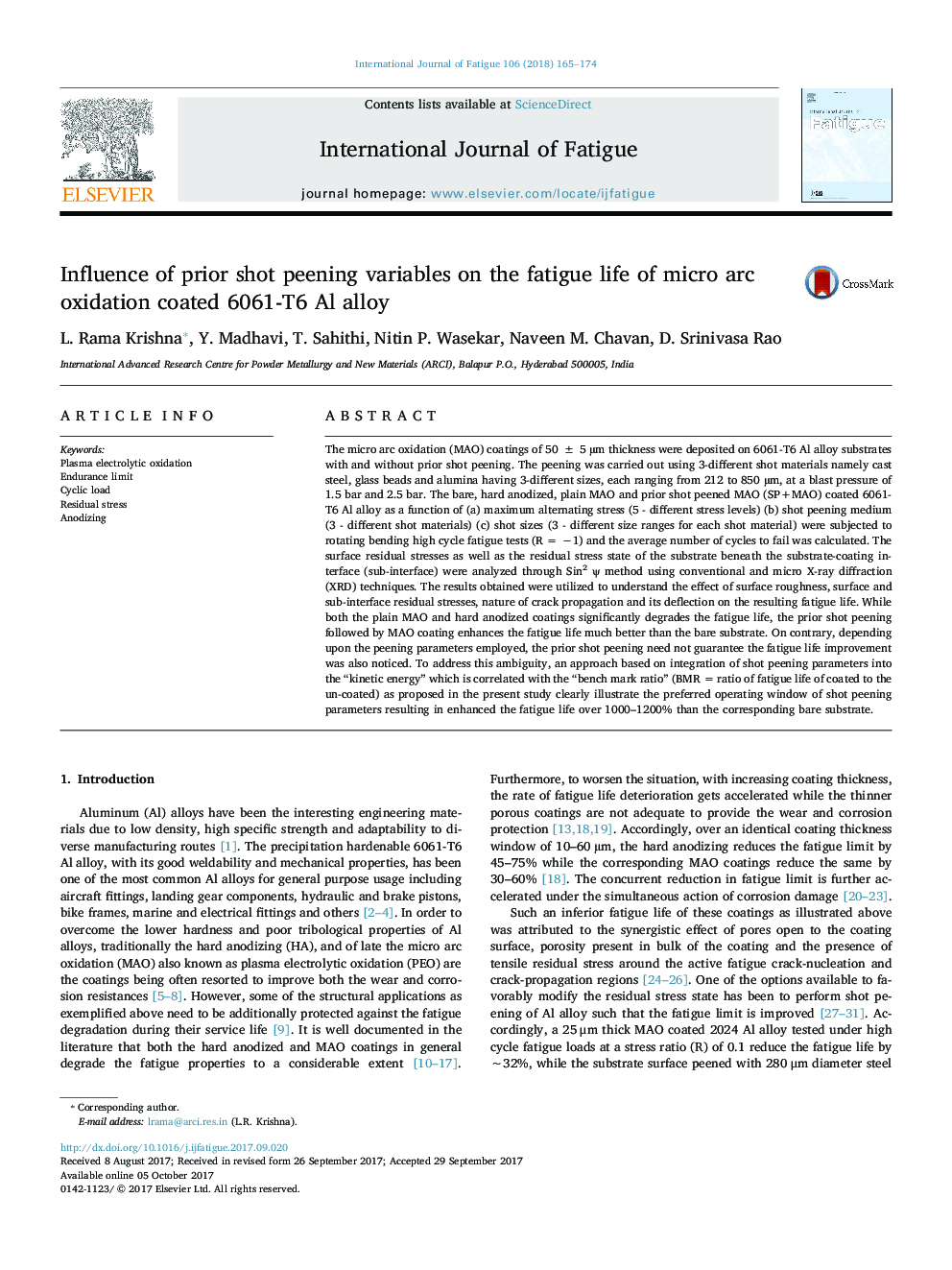| Article ID | Journal | Published Year | Pages | File Type |
|---|---|---|---|---|
| 5014871 | International Journal of Fatigue | 2018 | 10 Pages |
â¢MAO and hard anodizing treatments induce a significant fatigue debit of Al alloy.â¢Prior shot peening enhances the endurance limit of MAO coatings.â¢Sub-surface compressive residual stresses dominate surface roughness influence.â¢Benefit of shot peening realized only if particle kinetic energy is â¥0.2 mJ.â¢Kinetic energy â¥1.0 mJ enhances fatigue life by an order of magnitude.
The micro arc oxidation (MAO) coatings of 50 ± 5 µm thickness were deposited on 6061-T6 Al alloy substrates with and without prior shot peening. The peening was carried out using 3-different shot materials namely cast steel, glass beads and alumina having 3-different sizes, each ranging from 212 to 850 µm, at a blast pressure of 1.5 bar and 2.5 bar. The bare, hard anodized, plain MAO and prior shot peened MAO (SP+MAO) coated 6061-T6 Al alloy as a function of (a) maximum alternating stress (5 - different stress levels) (b) shot peening medium (3 - different shot materials) (c) shot sizes (3 - different size ranges for each shot material) were subjected to rotating bending high cycle fatigue tests (R = â1) and the average number of cycles to fail was calculated. The surface residual stresses as well as the residual stress state of the substrate beneath the substrate-coating interface (sub-interface) were analyzed through Sin2 Ï method using conventional and micro X-ray diffraction (XRD) techniques. The results obtained were utilized to understand the effect of surface roughness, surface and sub-interface residual stresses, nature of crack propagation and its deflection on the resulting fatigue life. While both the plain MAO and hard anodized coatings significantly degrades the fatigue life, the prior shot peening followed by MAO coating enhances the fatigue life much better than the bare substrate. On contrary, depending upon the peening parameters employed, the prior shot peening need not guarantee the fatigue life improvement was also noticed. To address this ambiguity, an approach based on integration of shot peening parameters into the “kinetic energy” which is correlated with the “bench mark ratio” (BMR = ratio of fatigue life of coated to the un-coated) as proposed in the present study clearly illustrate the preferred operating window of shot peening parameters resulting in enhanced the fatigue life over 1000-1200% than the corresponding bare substrate.
Graphical abstractDownload high-res image (167KB)Download full-size image
